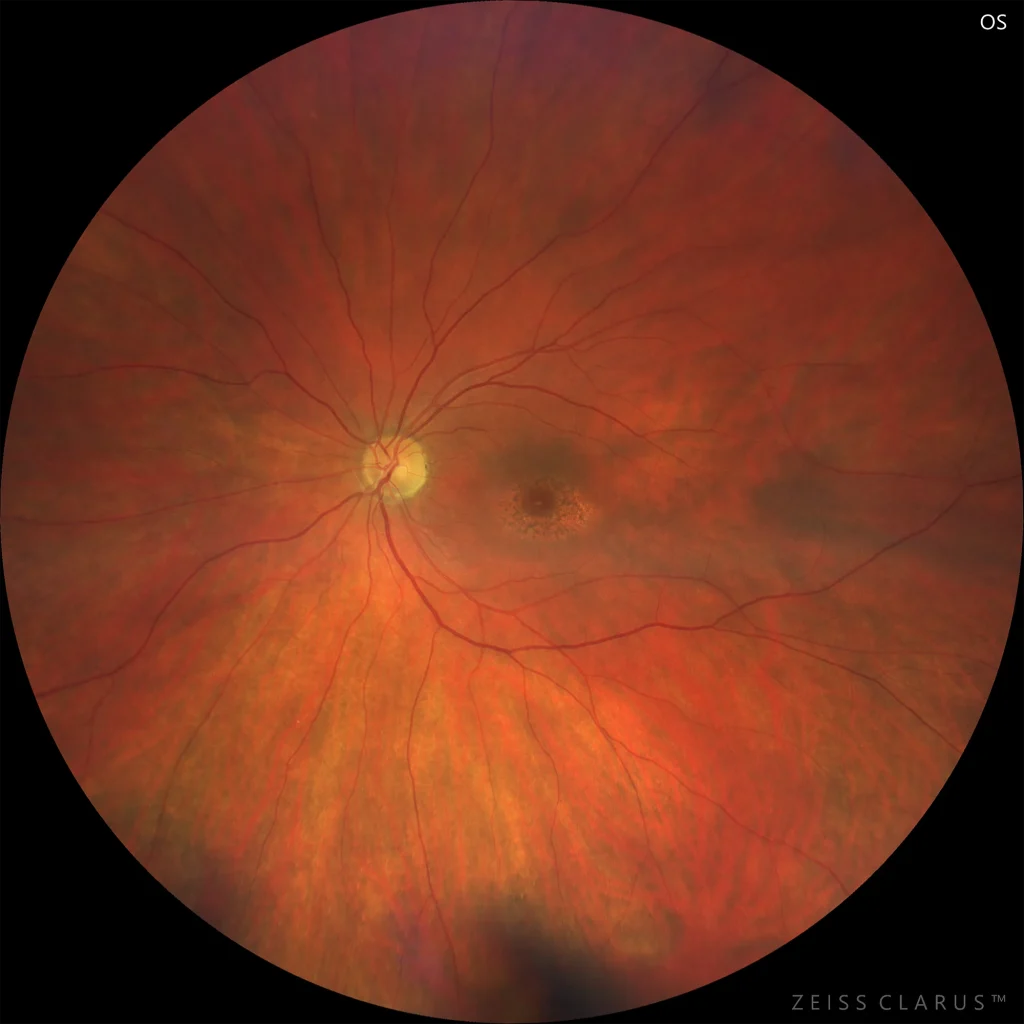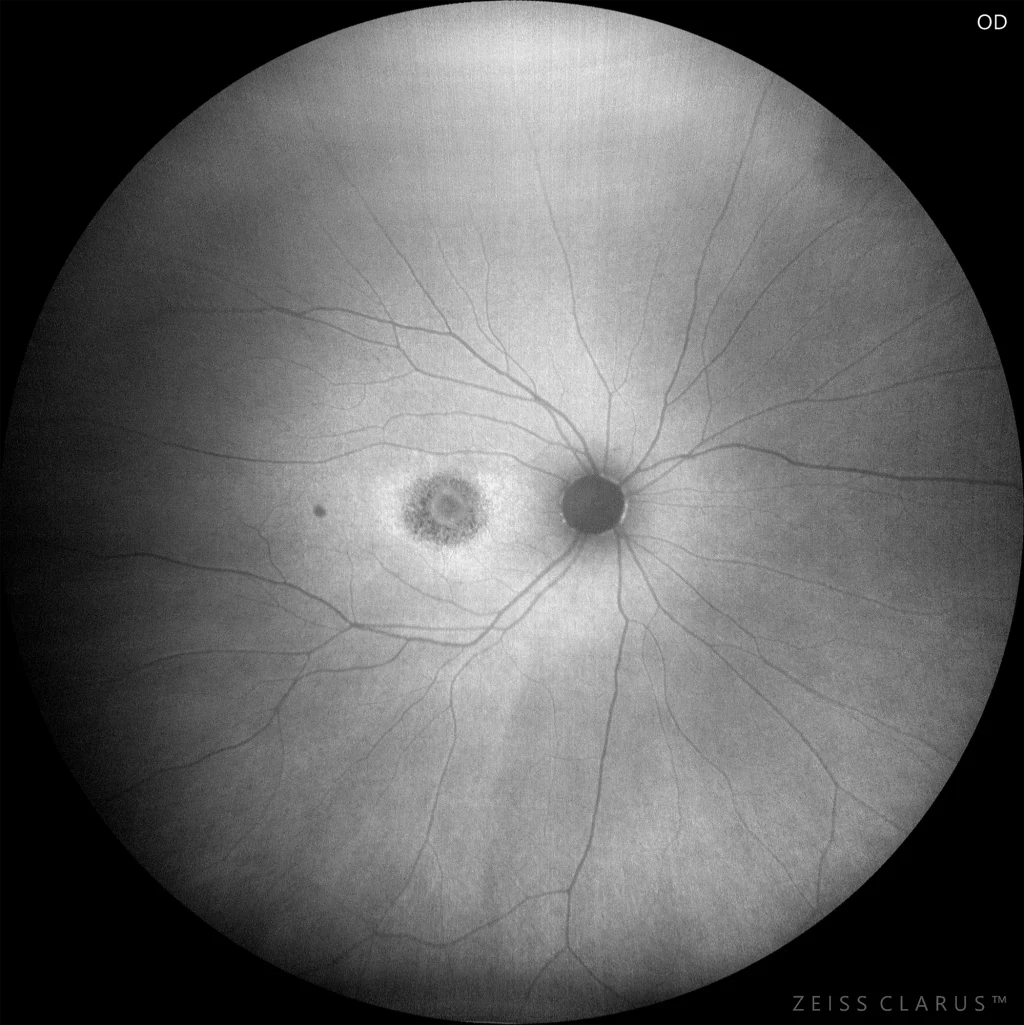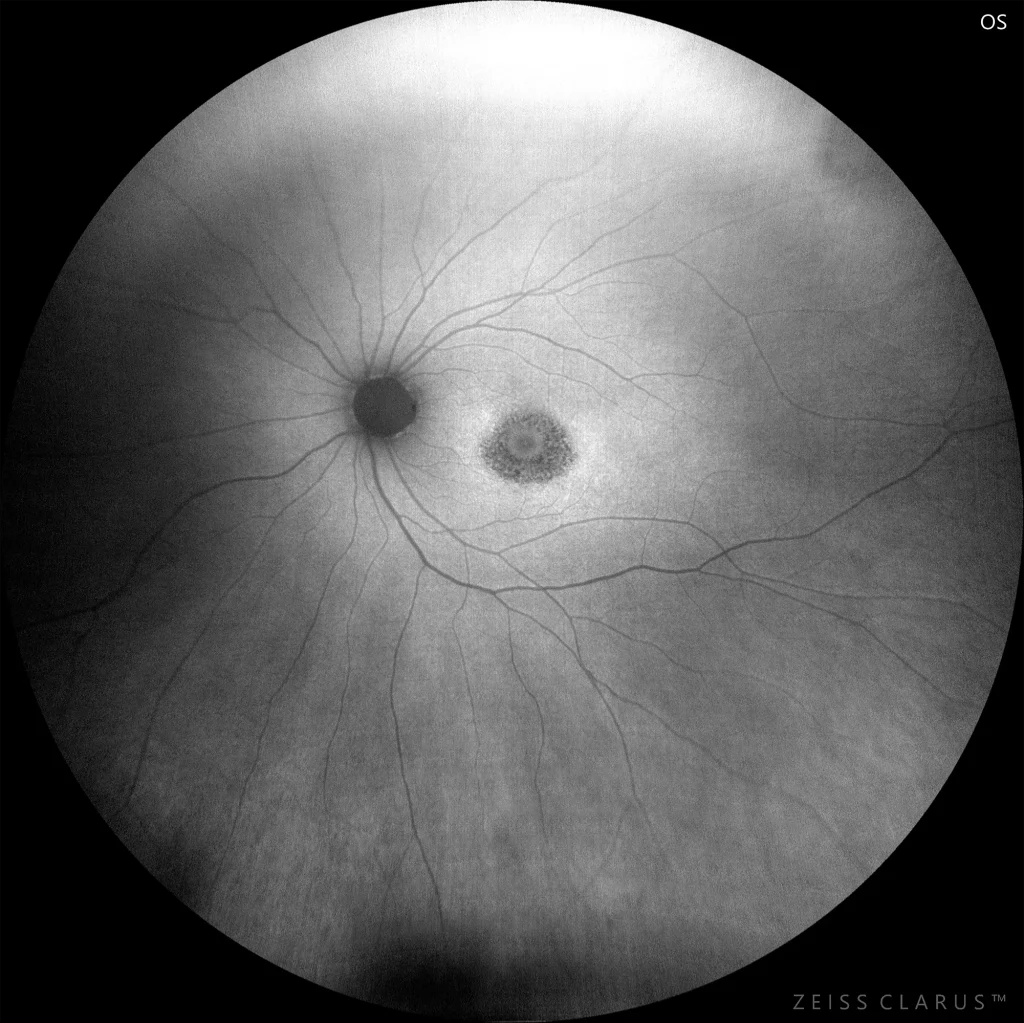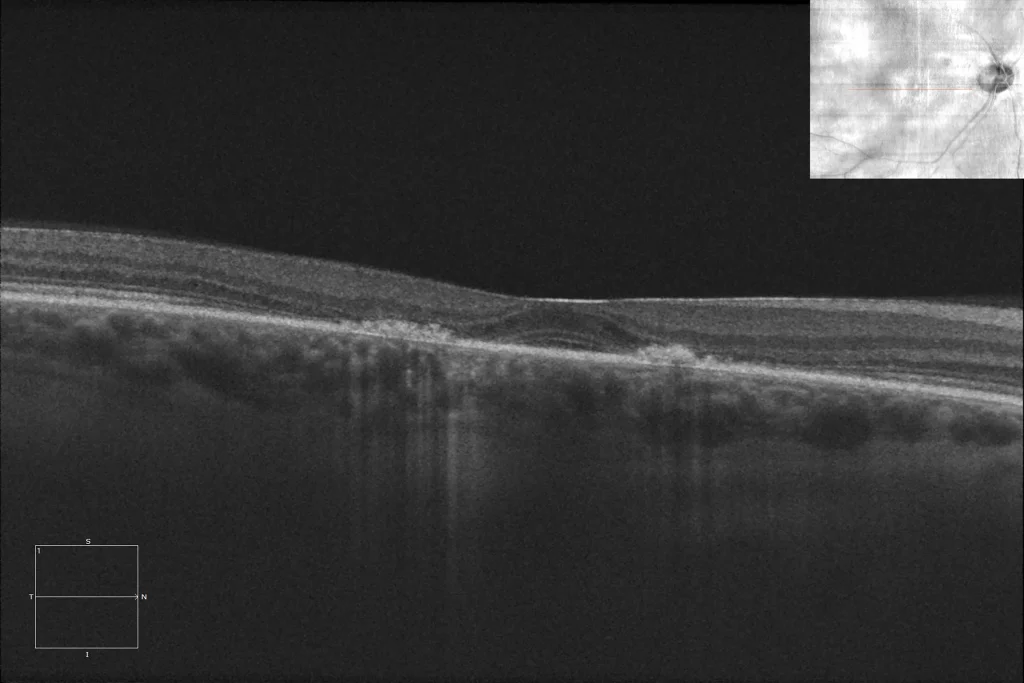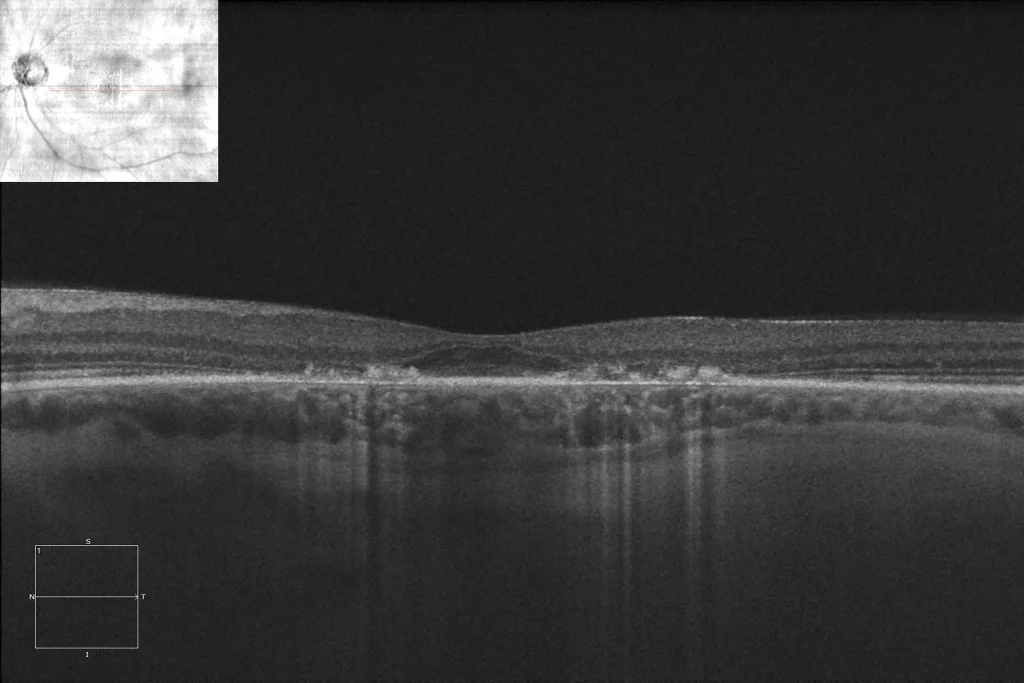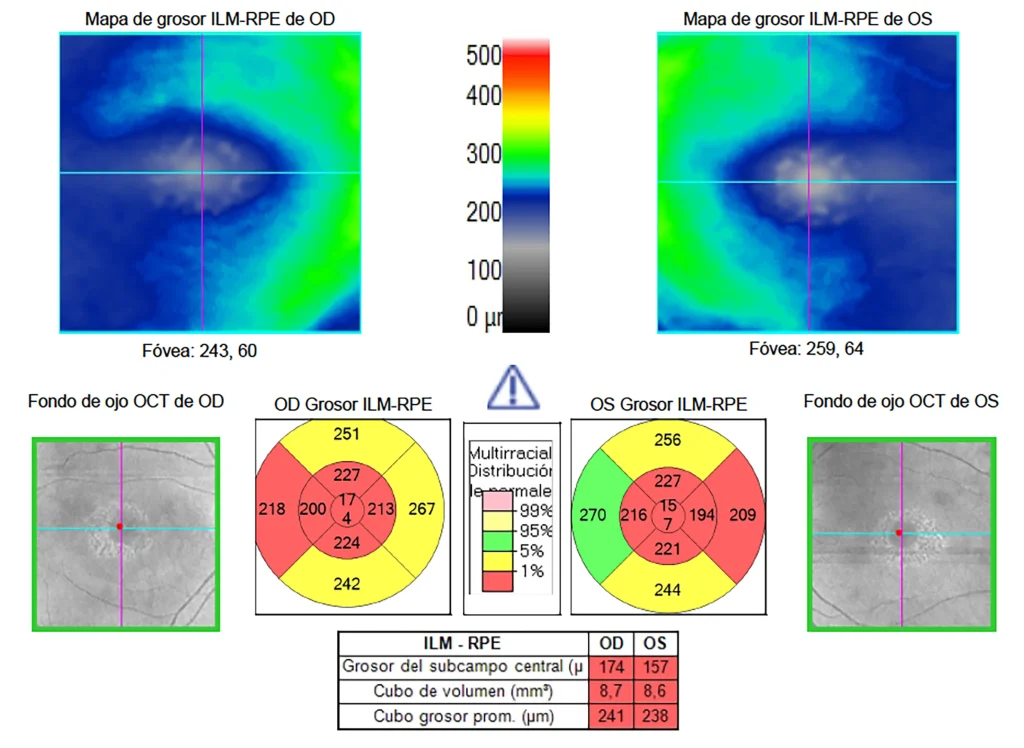< back
Hydroxychloroquine maculopathy
Description
Maculopathy due to antimalarials, chloroquine (CQ) and hydroxychloroquine (HCQ), is an infrequent but irreversible side effect of chronic treatment with these drugs. It is more common with chloroquine, high daily doses, prolonged treatment duration, concomitant use with tamoxifen, and in the presence of kidney disease or previous maculopathy.
The goal of new screening guidelines is to recognize signs of toxicity very early before it affects visual acuity and becomes visible in the fundus.
Comments
65-year-old woman with rheumatoid arthritis, under HCQ treatment for 10 years. She hasn't attended a check-up in the last 2 years. Multimodal imaging tests show advanced HCQ maculopathy with fundus involvement.Tests:
- Color fundus photography (Clarus 700, Zeiss): Bilateral “bull's eye maculopathy”.
- Fundus autofluorescence (AF Green, Clarus 700): Bilateral rounded hypoautofluorescent perimacular image.
- Optical coherence tomography (Cirrus HD 5000): Maculae with marked paracentral alteration of ellipsoids and RPE, with “flying saucer” image at the foveolar level.
- Optical coherence tomography (Macular cube, Cirrus 5000): Marked central and paracentral thinning in both eyes.

